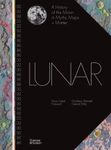![Planetary Geology Planetary Geology]()
Click to have a closer look
About this book
Contents
Customer reviews
Biography
Related titles
About this book
Planetary Geology provides an up-to-date interdisciplinary geoscience-focused overview of solid solar system bodies and their evolution, based on the comparative description of processes acting on them.
Planetary research today is a strongly multidisciplinary endeavor with efforts coming from engineering and natural sciences. Key focal areas of study are the solid surfaces found in our Solar System. Some have a direct interaction with the interplanetary medium and others have dynamic atmospheres. In any of those cases, the geological records of those surfaces (and sub-surfaces) are key to understanding the Solar System as a whole: its evolution and the planetary perspective of our own planet.
Planetary Geology has a modular structure and is divided into 4 sections comprising 15 chapters in total. Each section builds upon the previous one but is also self-standing. The sections are:
- Methods and tools
- Processes and Sources
- Integration and Geological Syntheses
- Frontiers
The latter covers the far-reaching broad topics of exobiology, early life, extreme environments and planetary resources, all areas where major advancements are expected in the forthcoming decades and both key to human exploration of the Solar System. The target readership includes advanced undergraduate students in geoscience-related topics with no specific planetary science knowledge; undergraduates in other natural science domains (e.g. physics, astronomy, biology or chemistry); graduates in engineering and space systems design who want to complement their knowledge in planetary science.
The authors' backgrounds span a broad range of topics and disciplines: rooted in Earth geoscience, their expertise covers remote sensing and cartography, field mapping, impact cratering, volcanology and tectonics, sedimentology and stratigraphy exobiology and life in extreme environments, planetary resources and mining. Several generations of planetary scientists are cooperating to provide a modern view on a discipline developed from Earth during and through Space exploration.
Contents
- Introduction
- Geologic tools (fundamental concepts): Stratigraphy and planetary chronostratigraphy + comparative planetology approach
- Exploration Tools: remote sensing, in-situ, remote measurements in planetary exploration
- Cartography tools: geologic and geospatial mapping
- Ground truth: Apollo, Luna, Venera , Viking, MSL and MER
- Impact cratering
- Endogenic processes in silicate and icy crusts
- Exogenic processes
- Interior and Atmospheres
- Geological evolution of terrestrial planets (comparative planetology) - main aspects and outstanding questions
- Geological evolution of icy and rocky-icy satellites - main aspects and outstanding questions
- Geological evolutions on minor bodies: a geological view at comets and asteroids and dwarf planets
- Exobiology geobiology planetary exploration and life
- Resources and robotic/manned perspective
- Appendix
Customer Reviews
Biography
Dr. Angelo Pio Rossi is a planetary scientist who received his doctoral degree at the Unviersity of D'Annunczio, Pescara, in 2004. He was appointed as Professor of Earth and Planetary Science at the Department of Physics & Earth Sciences at Jacobs University Bremen where he researches and teaches topics of Earth and planetary sciences. His main research interests are in planetary geology, remote sensing, terrestrial analogue studies, and impact cratering. He has been involved with ESA and NASA Mars missions. He has been publishing papers on topics of planetary geology and geomorphology and is a member of the editorial board of Planetary & Space Science and co-editor of the Springer/ISSI Space Sciences Series Volume 59 on Dust Devils.
Dr. Stephan van Gasselt received his doctoral degree on topics of Martian geomorphology at the Freie Universitat Berlin, Germany in 2007 and was appointed at National Chengchi University, Taiwan, where he teaches and researches on topics of Earth and planetary sciences with a focus on geology and geomorphology, He has been involved as Co-Investigator in a number of ESA missions. He is executive editor for the Elsevier journal GeoResJ.
The authors' backgrounds span over a broad range of topics and disciplines: rooted in Earth geoscience, their expertise covers remote sensing and cartography, field mapping, impact cratering, volcanology and tectonics, sedimentology and stratigraphy exobiology and life in extreme environments, planetary resources and mining. Several generations of planetary scientists arecooperating, to provide a modern view on a discipline developed from Earth during and through Space exploration.

































